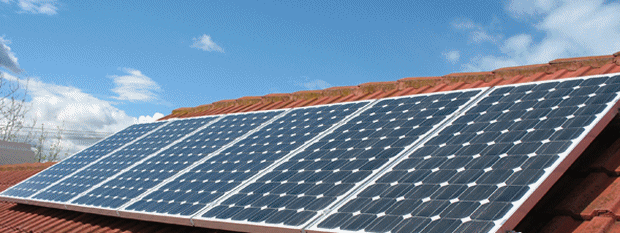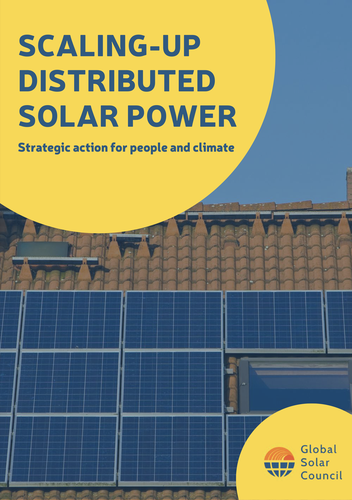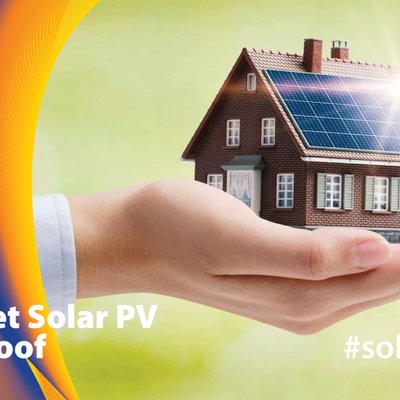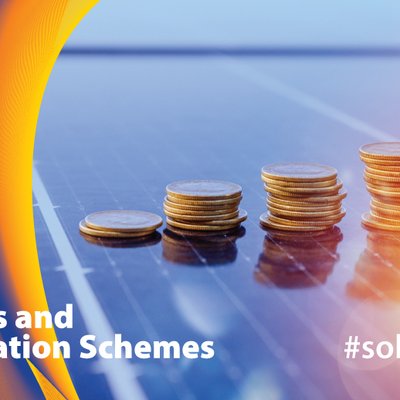Welcome to the Global Solar Council’s bold initiative, “Empowering People with Solar PV.” This campaign is dedicated to accelerating the adoption of distributed solar photovoltaic (PV) systems, particularly in the buildings sector, to help achieve global net-zero targets.
As we face rising energy prices and increasing grid disruptions due to extreme weather and geopolitical challenges, solar PV offers a dependable way for individuals and communities to stabilize energy costs and reduce reliance on fossil fuels. By focusing on rooftop systems for homes, businesses, and public structures, we aim to instill a cultural shift towards sustainable investments and energy independence.
Join us in this global movement to embrace the power of distributed solar as a cornerstone for the future, benefiting our planet and people for a brighter future.
Distributed PV across the world
To better understand the opportunities and challenges for the growth of distributed PV across the world, we've worked with our global partners for country-level analysis on distributed PV markets.
Argentina

Argentina’s solar capacity has reached 1.51 GW, with distributed solar PV contributing just 12 MW (0.8%). The country aims for 20% renewable energy by 2025. Despite high solar irradiation levels, the distributed solar sector remainsunderdeveloped. Key challenges include complex permitting processes and financial barriers, such as delays in investment repayments due to high inflation. Simplifying these procedures and offering better incentives could enhance growth. Argentina has potential for 1 GW of distributed solar by 2030, but current regulatory and financial hurdles need addressing to realize this goal.
Read the full country analysisBrazil

Brazil leads Latin America in solar PV with 15.8 GW, including 10.8 GW of distributed generation. In 2021, Brazil saw a record 3.95 GW increase in distributed solar capacity, driven by favorable net-metering laws and high irradiation levels. The new distributed generation law offers legal certainty, promising continued growth. Permitting is relatively straightforward, but grid connection complexity remains moderate. Brazil targets 60 GW of rooftop solar by 2030, reflecting strong policy support and market potential.
Read the full country analysisChile

Chile, recognized as a top emerging market for renewable energy, has a total solar PV capacity of 5.2 GW, with distributed solar contributing 2.3%. The permitting process is straightforward, but grid connection poses significant challenges. The PMGD model supports small-scale installations up to 9 MW, ensuring grid connection and a fixed purchase price for excess power. Despite high solar potential, barriers include limited grid capacity and lack of incentives for distributed energy resources. Chile aims to expand rooftop solar to 500 MW by 2026.
Read the full country analysisChina

China stands as a global leader in solar energy, producing over 80% of the world’s solar panels and continuously expanding its vast solar capacity, which reached 536 GW in 2023. The nation’s aggressive renewable targets, including a plan to install 200 GW of wind and solar in 2024 alone, underscore its commitment to sustainable energy. Despite this growth, challenges persist with regional variations in grid connection processes and local regulatory hurdles, highlighting the need for infrastructure enhancements to support continued expansion.
Read the full country analysisColombia

Colombia’s solar capacity stands at 160 MW, with distributed solar making up 89% (143 MW). The country has significant potential, aiming for 7.4 GW of rooftop PV across various sectors. Incentives include fiscal deductions and net-metering. However, the permitting and grid connection processes are complex, rated 3 out of 5 in difficulty. A national law streamlines authorization, but barriers like environmental permits persist. Colombia’s distributed solar sector could expand significantly with regulatory simplifications and improved incentives.
Read the full country analysisFrance

France has achieved a solar PV capacity of 16.3 GW, with distributed solar contributing 1.1 GW. The country aims for 40% renewable energy by 2030, with solar PV playing a crucial role. Permitting and grid connection processes are relatively straightforward, rated 4 out of 5 in complexity. France supports solar adoption through various incentives, including feed-in tariffs and tax credits. However, regional variations in procedures pose challenges. Enhancing uniformity in regulations and streamlining processes could accelerate growth
Read the full country analysisGermany

Germany is rapidly expanding its solar PV capacity, reaching 82 GW at the end of 2023, with substantial contributions from rooftop installations. In the past year alone, 14 GW were added, emphasizing its commitment to renewable energy. About 35% of this capacity is residential, with commercial and industrial setups comprising another 32%. Germany aims to derive 80% of its electricity from renewables by 2030, with photovoltaics playing a crucial role. Despite efficient permitting, regional variations pose challenges. Yet, dynamic incentives like reduced VAT for small systems and adaptable feed-in tariffs support Germany’s push towards a sustainable energy future, optimizing its 409 GW rooftop solar potential.
Read the full country analysisIndia

India’s solar sector is on the rebound, adding an impressive 17.4 GW in 2022 and another 12.76 GW in 2023, boosting its total capacity to 71.78 GW. Among its ambitious goals, India aims to install 40,000 MW of rooftop solar by 2026 and achieve a staggering 500 GW of solar power by 2030. Diverse state policies complicate matters, with varying net and gross metering arrangements affecting the integration and compensation of solar electricity. Nevertheless, India supports solar adoption through significant incentives, including subsidies that cover up to 30% of installation costs in general states and up to 70% in special category states, bolstering its push towards a robust renewable energy future.
Read the full country analysisItaly

Italy’s solar PV capacity totals 25 GW, with distributed solar accounting for 16.6 GW (66%). The country targets 80% renewable energy by 2030. Italy’s permitting process is rated 5 out of 5 in complexity, mainly due to regional variations. Incentives include reduced VAT and feed-in tariffs, which support strong market growth. Simplifying authorization procedures and ensuring uniform regulations could further enhance Italy’s distributed solar sector, which plays a significant role in its energy transition strategy.
Read the full country analysisKenya

Kenya is experiencing dynamic growth in its solar energy sector, with installed capacity escalating from a mere 3 MW in 2012 to approximately 169.2 MW by 2022. This impressive trajectory is highlighted by diverse installations across residential, commercial, industrial, and large-scale solar projects. The nation aims to unlock its substantial solar potential, estimated at nearly 15,000MW, with targeted efforts to expand rooftop and commercial solar PV installations. Despite these advances, the sector faces challenges such as complex permitting processes and varied requirements across different regions, which can slow down project deployment. However, Kenya’s commitment to enhancing its solar infrastructure and regulatory environment, coupled with a strategic focus on increasing renewable energy contributions to 77.23% of its total energy mix, underscores its dedication to a sustainable energy future.
Read the full country analysisMalaysia

Malaysia’s solar PV capacity is 4 GW, with distributed solar contributing 408 MW. The country targets 31% renewable energy by 2025. Permitting and grid connection processes are complex, rated 5 out of 5 in difficulty. Incentives include tax breaks and capital investment refunds. However, regulatory hurdles and slow financial support impede growth. Streamlining these processes and offering better incentives could accelerate Malaysia’s solar adoption, leveraging its high solar potential.
Read the full country analysisMexico

Mexico’s solar PV capacity is 8.15 GW, with distributed solar making up 2.01 GW (25%). The country aims for 35% renewable energy by 2024. Permitting and grid connection processes are relatively straightforward, rated 2 and 1 out of 5 in complexity, respectively. Incentives include net-metering and tax benefits. However, regional variations in procedures pose challenges. Simplifying and standardizing regulations could enhance growth, tapping into Mexico’s substantial solar potential.
Read the full country analysisThe Philippines

The Philippines has a solar PV capacity of 1.3 GW, with distributed solar contributing 182 MW. The country targets 35% renewable energy by 2030. Permitting and grid connection processes are moderately complex, rated 2 and 3 out of 5, respectively. Incentives include net-metering and fiscal benefits. However, regulatory hurdles and limited financial support slow growth. Streamlining processes and offering better incentives could accelerate solar adoption, leveraging the Philippines’ high solar irradiation.
Read the full country analysisSouth Africa

South Africa’s solar PV capacity is 6.3 GW, with distributed solar contributing 3.75 GW (59%). The country targets 20 GW of solar PV by 2030. Permitting and grid connection processes are moderately complex, rated 4 and 2 out of 5, respectively. Incentives include tax breaks and capital investment refunds. However, regulatory hurdles and financial barriers impede growth. Streamlining these processes and offering better incentives could accelerate South Africa’s solar adoption, enhancing energy security.
Read the full country analysisSpain

Spain’s solar PV capacity totals 16.2 GW, with distributed solar accounting for 2.7 GW. The country targets 74% renewable energy by 2030. Permitting and grid connection processes are moderately complex, rated 5 out of 5. Incentives include net-metering and tax benefits. However, regional variations in procedures pose challenges. Simplifying and standardizing regulations could enhance growth, leveraging Spain’s high solar potential.
Read the full country analysisUkraine

Ukraine’s solar PV capacity is 7 GW, with distributed solar contributing 700 MW. The country aims for 25% renewable energy by 2035. Permitting and grid connection processes are moderately complex, rated 3 and 1 out of 5, respectively. Incentives include net-metering and tax benefits. However, regulatory hurdles and financial barriers impede growth. Streamlining these processes and offering better incentives could accelerate Ukraine’s solar adoption, enhancing energy security amidst ongoing challenges.
Read the full country analysisUAE

The UAE is actively advancing in the solar sector, notably marked by the development of the world’s largest single-site solar farm at Al Dhafra, which boasts a 2 GW capacity. This impressive project has propelled the country’s total solar capacity beyond 3 GW as of 2022. With a bold goal to reach 14 GW of renewable energy by 2030, the UAE is set to significantly reduce carbon emissions—projects like the Mohammed bin Rashid Al Maktoum Solar Park in Dubai are expected to cut 6.5 million tons annually upon reaching a 5,000 MW capacity. Facilitating solar adoption, initiatives such as Shams Dubai have helped simplify the permitting and grid connection processes, although the requirements can vary across different Emirates, impacting the ease of installation.
Read the full country analysisScaling-up distributed solar generation
As part of the Global Solar Council’s Empowering People with Solar PV initiative, the association has published a report ‘Scaling-up distributed solar generation: strategic action for people and climate’. The report has been developed in close collaboration with regional and national solar power associations across the world, and uncovers how countries can tap into their distributed solar PV potential.
The report is an important tool for policymakers to accelerate the energy transition in their country, and includes:
- New analysis on authorization procedures and distributed PV capacity potential
- Best practices and recommendations on how to streamline the permitting and grid connection process
- Deep dive into the state-of-play for distributed solar PV in 12 countries, including: Argentina, Brazil, Chile, Colombia, France, Italy, Malaysia, Mexico, the Philippines, South Africa, Spain, and Ukraine
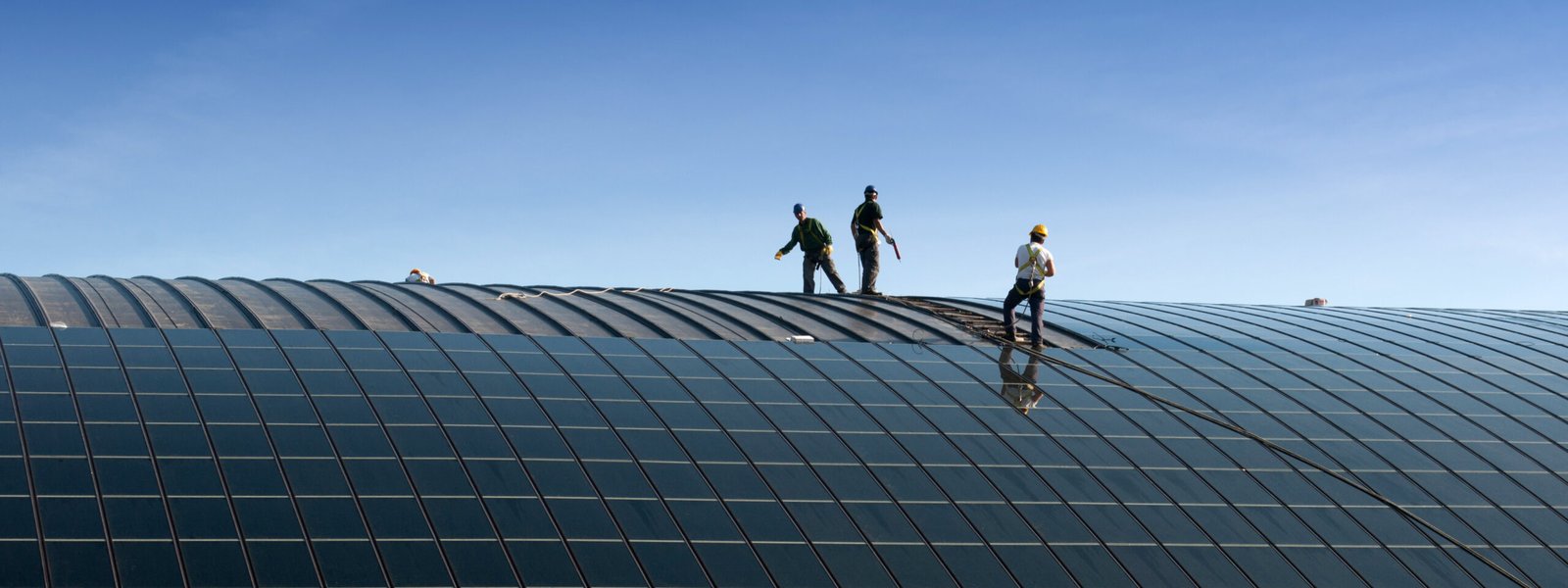
Contact us to become support the campaign and contribute to the scaling-up of distributed solar PV’s potential
![Global Solar Council [logo]](/static/images/gsc-logo-horizontal.svg)

